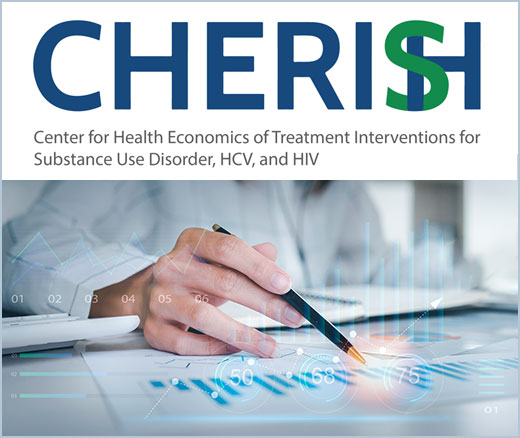
New Model Predicts Stimulant Overdose Risk Among Medicaid Patients
LDI Fellows Used Medicaid Data to Identify Individuals at Highest Risk for Cocaine- and Methamphetamine-Related Overdoses, Paving the Way for Targeted Prevention
Substance Use Disorder
Blog Post

Methadone is a lifesaving drug for many individuals with moderate to severe opioid use disorder. This medication has shown remarkable effectiveness in reducing opioid use and mitigating the risk of overdose.
Methadone is safe as prescribed, but exceeding the recommended dosage or combining it with illicit opioids like heroin or fentanyl poses a significant overdose risk. Federal regulations have limited take-home doses due to concerns about overdose and the persistent rhetoric about misuse and diversion since the drug wars of the 1970s. Instead, patients have had to visit a federally certified opioid treatment program (OTP) almost daily to receive their prescribed dose.
COVID-19, however, triggered a major change in this policy. To minimize exposure to the virus, the Substance Abuse and Mental Health Services Administration (SAMHSA) in March 2020 permitted OTPs, with state approval, to dispense a larger supply of methadone take-homes. Patients deemed stable could receive a 28-day supply, and less stable patients could get a 14-day supply.
To explore how this policy change affected methadone-related overdose deaths, LDI Fellows Rebecca Arden Harris, MD, MSc, Judith Long, MD, and David Mandell, ScD, tracked drug overdose deaths for about two years before and after the policy change among six different demographic groups: Black, Hispanic, and white men and women.
“Although we know that health outcomes can vary greatly based on demographic characteristics, the issue hadn’t received much attention,” said Harris, an assistant professor and primary care physician in the Department of Family Medicine and Community Health at the University of Pennsylvania.
Harris and her coauthors found that there were 406,484 U.S. drug overdose deaths between January 2018 and June 2022, 3.6% of which involved methadone, according to their report in JAMA Health Forum. Of the 14,529 methadone-involved deaths, most (14,112) occurred among the following groups: Black men: 1,234; Black women: 754; Hispanic men: 1,061; Hispanic women: 520; white men: 5,991; and white women: 4,552.
The policy change was designed to increase the number of patients receiving take-home doses, and yet there was no overall increase in fatal overdoses after accounting for the effects of COVID-19. More specifically, while the rate of methadone-involved overdose deaths for Black and Hispanic women and white men and women did not change, overdose deaths fell for Black and Hispanic men. A policy that can save lives among these populations is especially important, given that overdose deaths among Black and Hispanic men have more than tripled since 2015.
“Our data were not specific enough to tell us why methadone-involved overdose deaths dropped for these groups, but it’s an important question,” Harris said. Before restrictions were relaxed, patients typically had to report to a program five or six mornings per week to be observed taking the medication, a practice that was burdensome to many and posed a barrier to treatment uptake and retention.
“It could be a distressing and demeaning experience, especially for people who already face marginalization and endure systems of surveillance, stigma, exclusion, and punishment,” she said. Harris and coauthors conjectured that for Black and Hispanic men, the additional take-home doses may have provided a sense of normalcy and dignity that was often lacking at OTPs.
SAMHSA is currently reviewing its COVID-related policy changes to methadone treatment. Based on growing evidence showing benefits from the relaxed take-home policy—including greater treatment engagement and higher patient satisfaction with care—along with little evidence of misuse or medication diversion, it has put in place a revised set of temporary regulations expanding patient access to take-homes while it considers proposals to permanently ease restrictions.
The study, “Racial, ethnic, and sex differences in methadone-involved overdose deaths before and after the U.S. federal policy change expanding take-home methadone doses” was published in JAMA Health Forum on June 9, 2023. The authors are Rebecca Arden Harris, MD, MSc, Judith A. Long, MD, Yuhua Bao, PhD, and David S. Mandell, ScD.


LDI Fellows Used Medicaid Data to Identify Individuals at Highest Risk for Cocaine- and Methamphetamine-Related Overdoses, Paving the Way for Targeted Prevention

Penn and Four Other Partners Focus on the Health Economics of Substance Use Disorder

Penn Medicine’s New Summer Intern Program Immersed Teens in Street Outreach Techniques

LDI Experts Offer 10 Solutions to Get More Help to Seniors With Addiction

More Flexible Methadone Take-Home Policy Improved Patient Autonomy
Research Brief: LDI Fellow Recommends Ways to Increase Availability